How to Dig Clams – the ultimate beginner’s guide that’s Family-friendly and for ALL AGES! Learn to gather your own: Steamer clams, butter clams, cockle clams, manila, and more using our guide. Including what to wear for clamming! Steamer clamming is one of our favorite outdoor family-friendly activities.
*As an Amazon Associate, I earn from qualifying purchases through product links at no extra cost to you, if you are so kind as to purchase through my links.
- Link to our Youtube Channel
The Pacific Coast is absolutely bursting with seafood and is home to many varieties of clams. Some of which are less popular than our beloved Razor Clams. Razor Clam season brings thousands of clam diggers to our coast to dig their fair share of one of the biggest clams that is home to the Pacific Coast. If you are interested in Razor Clamming, check out our full guide on How to Razor Clam HERE.
Not receiving the same publicity, though just as delicious are cockle clams, butter clams, varnish clams, and Manila clams to name a few. They also live on beaches along the coast, though they don’t share the same habitat as razor clams. I will go over where to find the “other clams†in this article. Steamers and larger clams are such a fun hobby to take up for an individual or a family.
They’re fun to dig, but such a treat to eat up.
I will be uploading a recipe or two to follow as well, so be sure to subscribe and keep our Recipe page handy!

We discovered clamming for these clam varieties while at the beach with our family, as we usually are since we live on the coast. If you’re new, check out our About page! As we were heading towards the water we quickly noticed that we were surrounded by clam shows.
So if you’re looking for fun things to do in Ocean shores, things to do in Westport or other coastal towns and you like fresh seafood, then you will definitely want to read this guide and get going on how to dig clams and make your next fresh caught dinner! This is one of the BEST Pacific Northwest activities for families and one of the best outdoor activities for toddlers. Digging up their dinner is so educational!
I have a delicious Mediterranean Steamer Clam Bake recipe that I can’t wait to upload as well, so be sure to subscribe and keep our website handy!
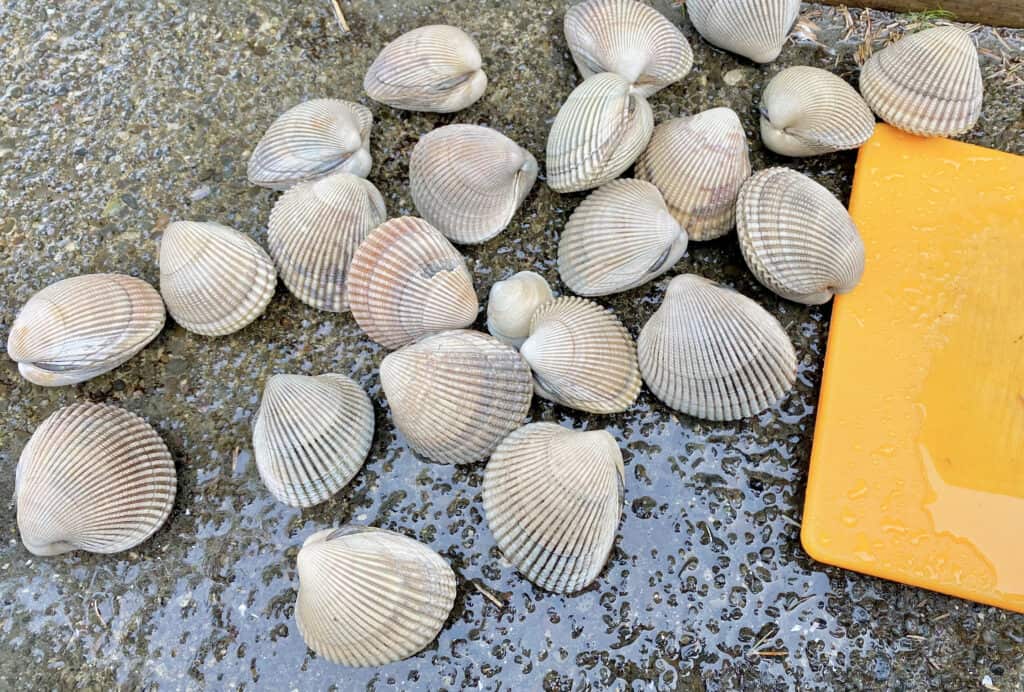
1. What clams can you find on the Pacific Coast?
You can find a wide variety of clams on the Pacific Coast, here’s a list: Razor clams (click HERE for our full Razor Clamming guide), Littleneck clams, Manila clams, Cockle clams, and butter clams. Though there are a wide variety of other clams spread in other regions such as the hood canal, where you can find Geoducks as well!
If the clams are small in size, then I consider them Steamer clams.
We tend to find a decent amount of Cockle clams that are typically large in size (picture above). If a clam is bigger than a steamer size, a thorough cleaning similar to razor clams needs to be done, as you can’t eat the guts (the black part) of a cockle clam.
2. What you need to know before heading out to dig clams
- Safety: Is it safe to dig clams right now?
Before heading to the beach, make sure you check the shellfish toxin levels on the shellfish safety map I have linked HERE. This map will let you know if the beach you’re heading to is currently safe for shellfish, otherwise, you can search for a new one.
- License: Do you need a permit to get clams in Washington?
Each person needs a shellfish license in order to clam in Washington state. It’s typically $15-20, purchased at most sporting goods or large grocery stores. However, kids up to age 15 can clam for free.
- Rules: how to know what clams you can keep?
What size clams can you keep?
Clams (besides razor clams) have size restraints. They must be at least 1 ½ inches to keep, except for varnish clams.
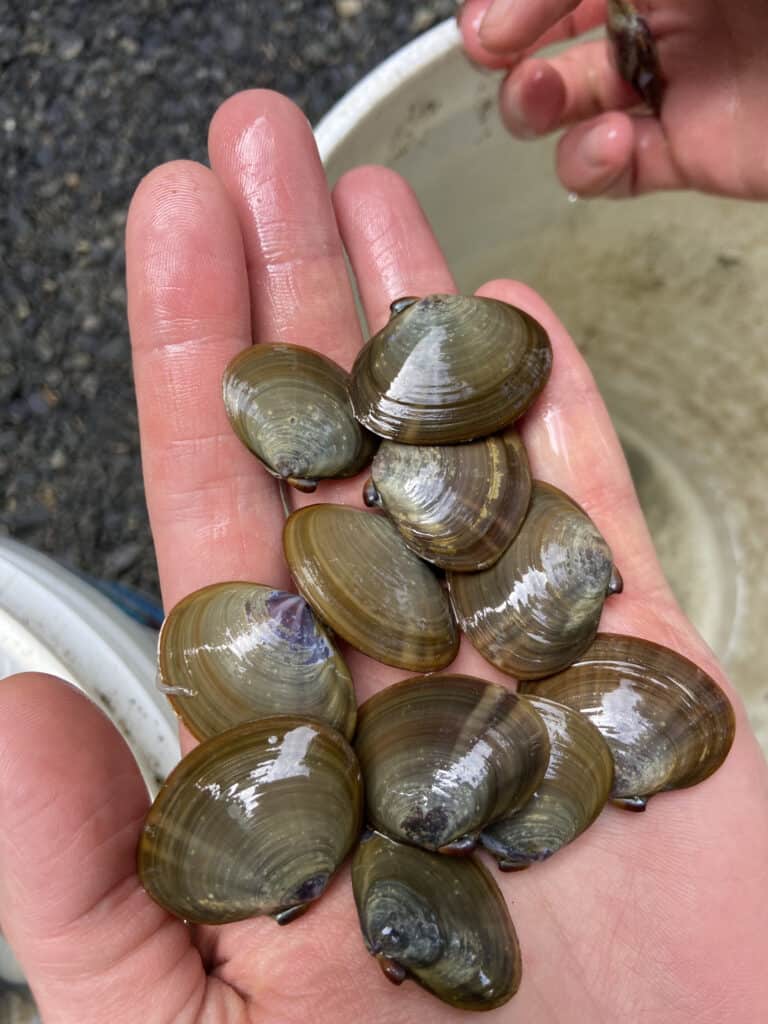
How many clams can you keep?
The rule is you can keep up to 10lbs OR up to 40 clams per person. Once you dig clams that meet the criteria, you must keep them, especially if you break their shells while digging.
A helpful tip to learn how to dig clams without crushing their shells, by digging gently around them.
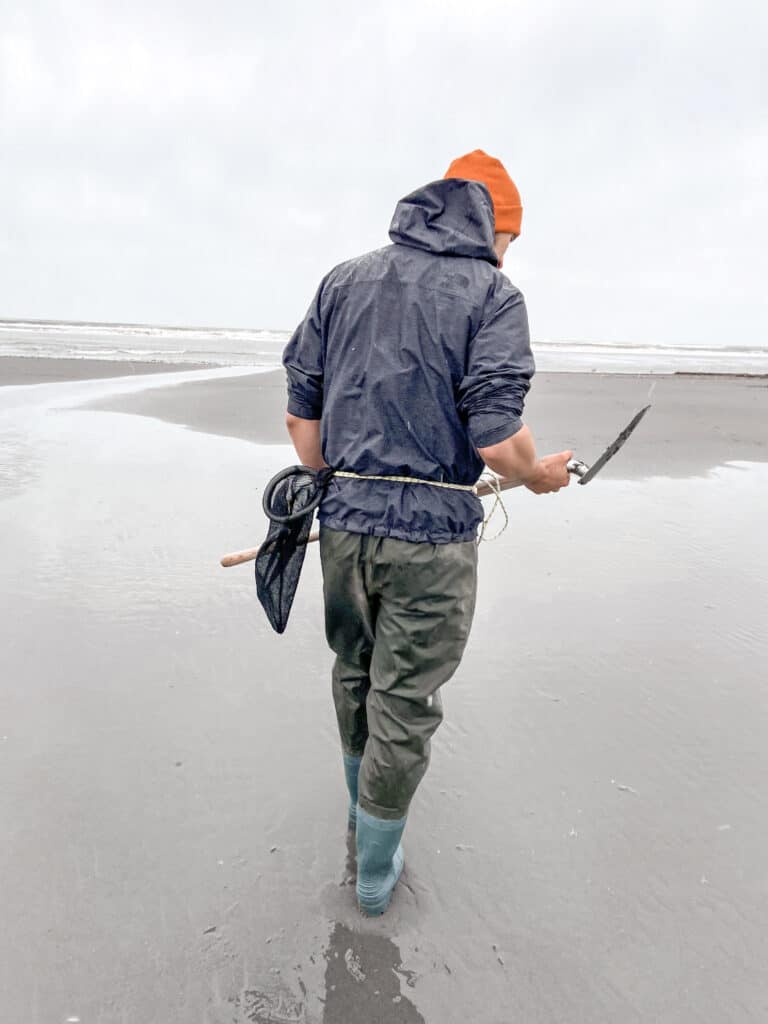
3. What you need to go clam digging
Similar to Razor Clamming, you should wear proper attire for steamer clamming. You have the following options that I’ve outlined. What we wear typically depends on the weather, if it’s raining, we opt for heavy-duty gear, if it’s sunny, we can get away with tall boots and an outer layer of clothing. However, I don’t recommend clamming without shoes, or with your everyday sneaker. Especially in muddy conditions. The best gear to have for clamming is Tall boots or waders. Plus, being in the Pacific Northwest you will get your fair share of use out of them.
I have a great guide below on the best outdoor gear for kids!
The best gear for clamming
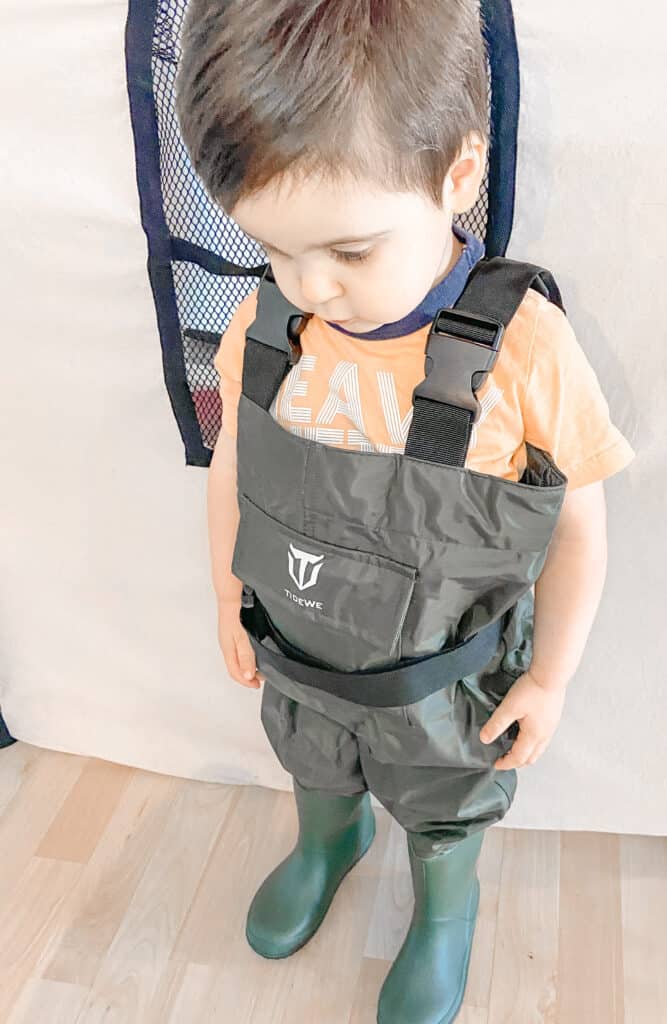
Boots:
Dress appropriately to weather conditions, but you will certainly need proper footwear!
So what shoes should I wear for clamming?
Tall outdoors boots are a must. These BOGS boots are my absolute favorite. I wear them Razor clamming when it’s not raining, steamer clamming, as well as on hikes or a casual outing. They are non-slip, and are rated for -30 F, so very versatile. They are worth every penny in terms of quality.
Between mud, and getting wet from the tide rising, you will definitely need a good pair of tall boots. I HIGHLY recommend investing in a pair of good outdoor boots if you like in the Pacific Northwest and enjoy outdoor activities.
My favorite women’s outdoor boots are Linked HERE.
Here is the men’s version, they look great and are high quality. Link HERE.
Waders:
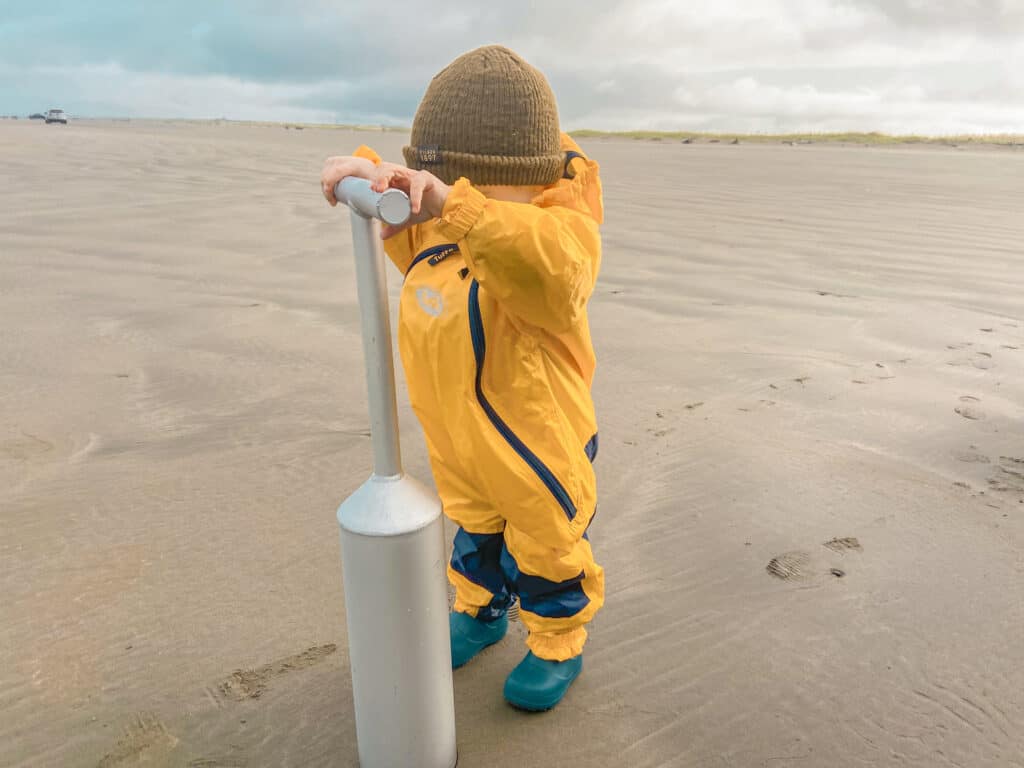
If you prefer waders, these are a good pair to start with. I prefer these waders as they have the boot attached for simplicity on my end, however, I do suggest high-quality options below that don’t have the boots attached.
These waders are a fair price and perfect for occasional use. They have both men’s and women’s sizes. The kids’ section is below if you plan to bring your kiddos or grandkids in on the fun! Link HERE for these TIDEWE waders.
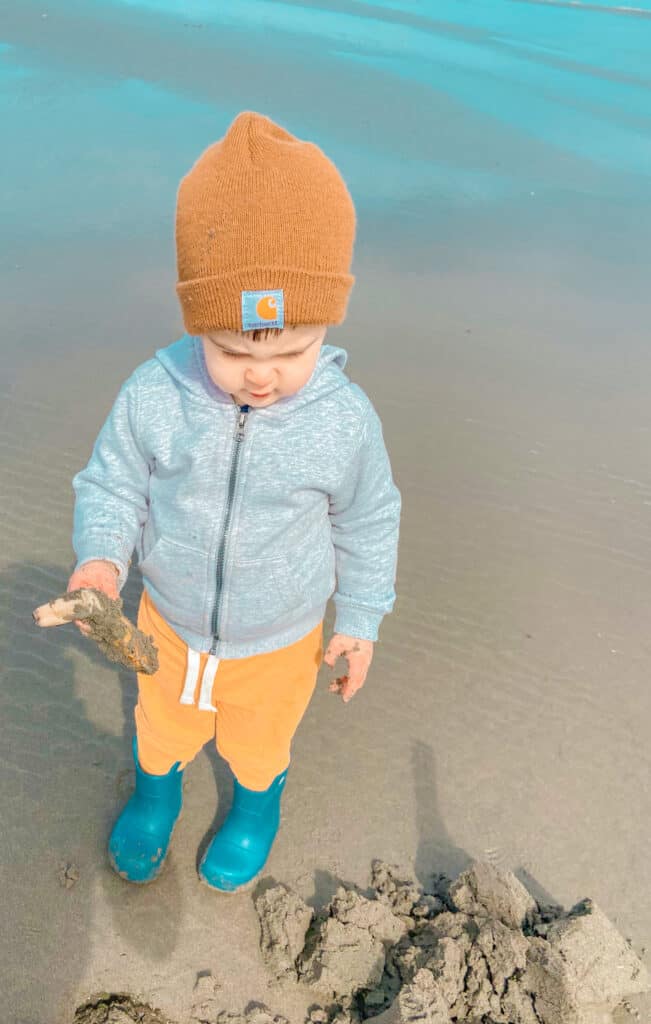
Simms is a great brand if you are looking for high-quality waders! You will just need boots to go with them. Link HERE for women’s Simms Waders.
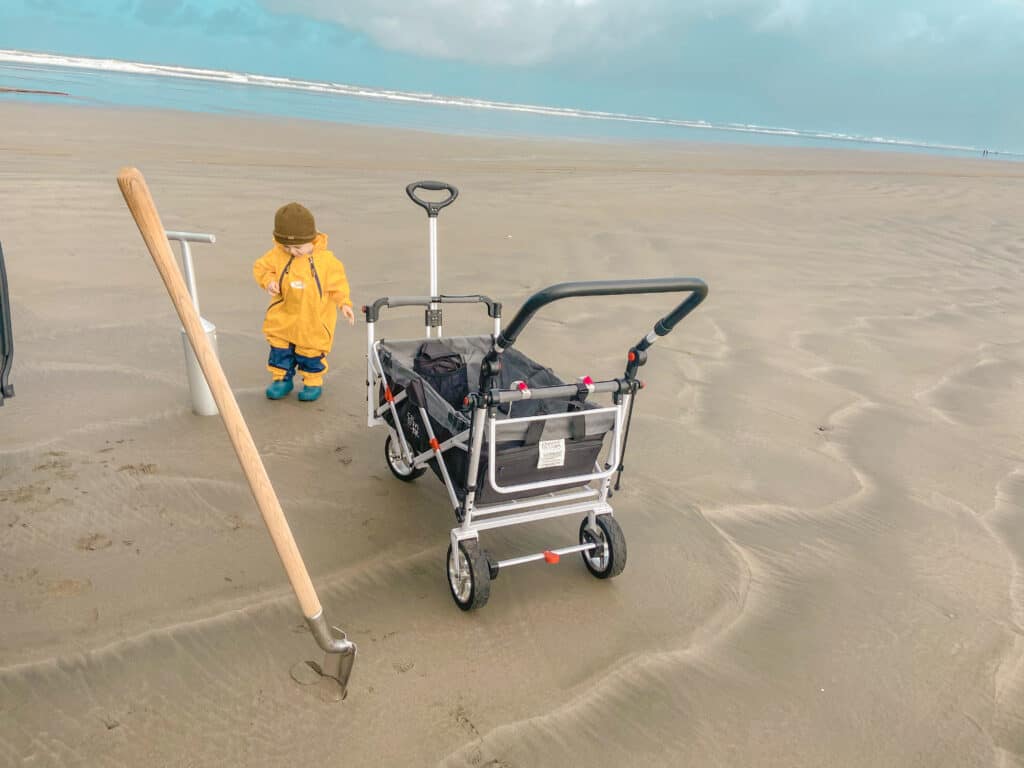
Link HERE for Men’s Simms waders. Again, you will need to put a pair of boots over these. They’re very high quality.
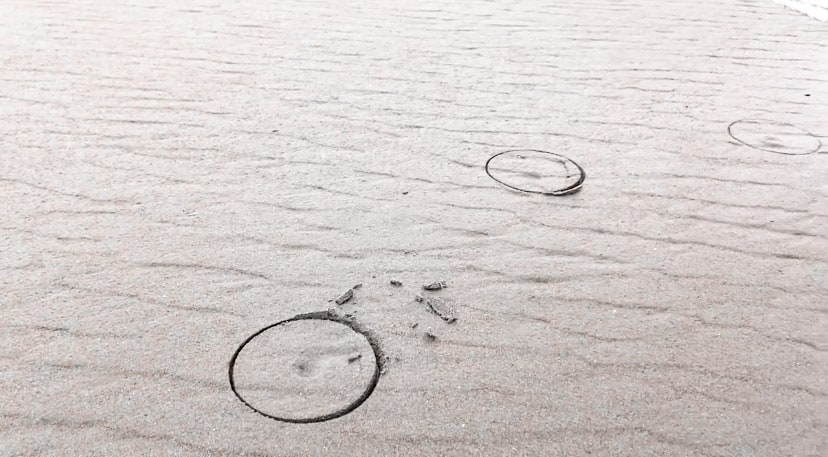
3. (a) What do kids wear for clamming?
Depending on the weather, we go back and forth between what our kids wear. Sometimes it’s a light jacket and tall outdoor boots, and other times it’s full-on rain gear. I’ve outlined our absolute best outdoor gear for kids Go through our options to see which one works best for you.
Waders.
Waders are a good option to avoid getting their clothes too muddy. Having an outer layer to take off before the kids get in the car is soooo nice! Here are the best waders for kids! Link HERE for our favorites!
Rain Gear.
Being in the Pacific Northwest, we tend to plan for possible rain, mud, and wind. That’s why we invested in the best rain gear for kids. Along with what I’ve previously mentioned, which is the importance of placing a waterproof layer of clothing above their current clothes. It’s nice to avoid extra unnecessary mess on the kiddos, you, as well as your car (less mess to clean up means having more time to create more memories!). We use this Muddy Buddy Rain Suit for Kids and we really love it.
Link HERE to the Muddy Buddy rain suit!
Tall Outdoor Rain Boots for Kids.
These are seriously the best rain boots for kids. If we’re not going to be as muddy, I typically only bring these rain boots with us. They’ve been great pair of PNW adventure boots for us! We absolutely love them and my kiddo puts them through so much already, and there’s still tons of life in them. Link HERE.
What gear to bring for babies and kids with disabilities for outdoor activities?
Our family currently consists of a kiddo with disabilities, a toddler, and a baby! So we know a thing or two about getting out and exploring with our entire family at tow. Here’s our process for clamming!
For outdoor activities, we put the baby in a baby carrier or we bring our beloved beach wagon that travels with us absolutely everywhere. We can’t go far without receiving compliments or questions about our wagon. If you’re interested, HERE is the link. It’s been the best beach wagon for all our outdoor adventures with kids.
Other reasons why we love it: It’s the best wagon with seat belts for kids (others cost double the price!), has pull and push handles, has a cooler, and we can hook up our daughter’s ON-THE-GO disability chair inside which has been a lifesaver! This is the Best beach wagon for the price!
3. (b) What tools do you need to dig clams?
To rake for clams, you will need a bucket and a small rake and that’s as complicated as it gets for clamming. Click HERE for a link to this rake! Link here if you want to buy this pair on Amazon.
4. When to dig for clams
Similar to other outdoor activities, timing is important for a successful clamming trip. There are a few factors that play a role on when to go clamming. I could go into a lot of detail here, but I’ll spare you the details and get to it, so you can be on your way to having fun and making new memories!
- What time of year is best for clamming
The first thing to remember about when to go clamming in Washington state is to check if the season is open. Unlike razor clams which have certain tides that are open for clam diggers, steamer clams and other clams don’t. You can go whenever it is safe to.
- What months are best to dig clams?
Clamming on the Pacific coast is open all year around, so you’re in luck! But what months are best to dig clams? September-November and again in March-August will be your best bet. Staying away from the winter months.
- What time of day is best to go clamming?
The tide plays a big role on when to go clamming. We typically time when to go clamming with the lowest tide of the day. A good low tide is -1.5 or lower.
To find out what the tide looks like for the days you’re interested in going clamming, simply google the tide schedule for that day (I like to use Tides.net).
The daily tide schedule plays a big role in successful clamming. Heading to the beach about an hour before a low tide is my rule of thumb. The clams would likely be higher in the sand and make their presence more known, through what’s called a “clam show†that we will go over in more detail in step 5 below, How to find Steamer Clams.
5. Where to dig for clams?
Let’s answer the ultimate question, which is how do you know where to dig for clams?
Typically, steamer clams and other clam species like to be in beaches that are a mix between sand, mud and small rocks. I tend to hunt down beaches on a bay, with more muddy/wet sand.
For Washington state steamer clamming, look for beaches with a bay. Along the Pacific Coast, such as Ocean Shores, and Westport head to the bay and get to digging. Another great spot for steamer clams away from the ocean is the Hood Canal. Steamer clams are extremely abundant on the Hood Canal in Washington State.
6. How do you harvest steamer clams?
Let’s get into how to find steamer clams first. When you get to the beach, you want to go closer to the tide. If you’re in a very sandy/muddy beach look for a clam show which is typically a hole in the ground, sometimes bubbling. Dig using your rake gently around the show until you find a clam, or two, or a dozen!
- How deep are steamer clams?
Cockle clams are usually right at the top of the surface. Varnish clams and other steamers are about an inch or two below the surface. So you really don’t have to dig far!
- How to find steamer clams without a show?
If you’re not finding a show, which happens to the best of us, start digging around! You will eventually run into a section of clams! The Pacific coast has plenty of clams typically in a bay.
- Can you keep the clams you find on the beach?
If they are not razor clams, you can keep most clams you find on the beach as long as you have your shellfish license. As long as the clams are the approved size.
7. How to clean steamer clams after harvesting
How to clean steamers is different than how to clean clams that are larger in size. Here are the different cleaning methods outlined.
This is how to clean steamer clams:
- Rinse with water until water runs clear.
- Place in a saltwater bath (I usually put ⅓ cup of salt into a very large bowl of water) for 20 minutes, then repeat again.
- Then soak in only water for another 20 minutes.
- Rinse off any extra debris or sand if any. Important to note that if any clams have opened in this process or are not closing back up, you have to toss them.
- They’re now ready to be cooked!
How to clean clams that are larger in size than steamers:
When we dig for clams, we tend to find a lot of larger clams. Which is both good and not so good. Good because it’s more bang for your buck. Not good because we have to clean them more thoroughly.
To clean clams such as cockle clams, you will have to remove the black waste inside, as they’re not edible. You have to remove the waste of larger clams since they hold most of the toxins, and no one needs that!
The steps are simple as – Steam up for a few seconds until they open, or shuck them. Remove them from their shell and cut off the guts ridding them of them.
If you found this interesting or helpful, please share this article on How to Dig Clams with others that might be interested in catching their own seafood!
- Link to our Youtube Channel








































![Air gun 101: The differences between .177 & .22 – Which jobs they do best ? [Infographic]](https://airgunmaniac.com/wp-content/uploads/2020/09/g44-150x150.jpg)


